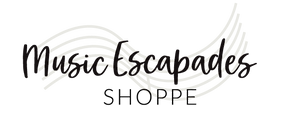
One of the biggest difficulties in being a music teacher is discovering the best ways to teach music students rhythm – but students often love puzzles, so why not teach rhythm through a puzzle?
A rhythm puzzle is a great way to teach music students rhythm because they have to participate in their learning!
Many students enjoy music math, which you can bring to a new level with a rhythm puzzle!


UNDERSTANDING Rhythm with Rhythm Puzzle
If your student does pretty well with feeling the rhythm but struggles with music math, Rhythm Puzzles are a great rhythm activity for them!
Not only is the Rhythm Puzzle a tactile activity, it is also visual, which helps students learn rhythm in two different ways.
>>> Get the Rhythm Puzzle here
Here are some ideas we use in our studio:
1) Build a rhythm tree with the Rhythm Puzzle.
Start with a whole note at the top and ask the student to fill in how many half notes would be below… then how many quarter notes? How many eighth notes? You can do this activity with both notes and rests.

2) Play a rhythm match game.
Use the tiles and have the student match the note values and rests. You can play this game without the board and just have the student pair all of the rhythm tiles.
Having the rests on the back of tiles reinforces that rests have values too, as most students tend to ignore them.

3) Fill in the blank.
Have your student “fill in the blank” with the Rhythm Puzzle. Place one note on the puzzle and ask them what note or notes will complete the measure.

4) Organize rhythms.
Mix up the rhythm tiles and have your student draw two tiles. They need to place them in order of biggest to smallest (e.g. if they draw a half note and dotted half note, they need to place them in order). Draw two more tiles. Add them to the pile of rhythm tiles in order. See how far your student can go with gradually adding tiles as “more or less” beats.


5) Play a matching game.
For your students who are rhythm-savvy, create different puzzles for your students to solve. For instance, “I need four beats created with four notes…” or “I need four beats created with six notes…”

6) Tap note values with a metronome.
I like to introduce note values by tapping it with the metronome.
For example, I will have students tap the quarter note 4x with the metronome and then do the same with double eighth notes to help students understand how each note value relates to another.
Then I have students add the two note values to create rhythm patterns. When students master this, I add more note values/tiles one at a time.



7) Ear training and rhythm dictation.
Start rhythm dictation by clapping a rhythm and having the student lay out the correct rhythm tiles needed. You can do 8 measures of rhythm with the board.
Additional tile sets (available to purchase separately) recommended to give your students a broader range of rhythm dictation.



8) Do some rest activity.
Focus some time on rest values! Use most of these ideas for rests instead of notes.


9) Create rhythm patterns.
Mix up the tiles on the board to create a variety of rhythm patterns. This is a versatile idea, as you can keep it as simple as quarter, half, and whole notes or extend it to more intermediate levels with sixteenth notes and more.

10) More rhythm training activities with the expanded set
My favorite activity is on the expanded set! I love using it with the metronome so that students can tap and "mix-up" rhythm patterns on any/all the pieces.
I use a wooden mallet or rhythm stick to tap on the rhythms right on the board, keeping to the metronome beat.
The expanded set includes advanced rhythms so it offers students a great way to master the most common rhythm patterns and improvise in a fun way!



11) Use with other tile sets.
Move beyond just simple rhythms! This board is compatible with compound note values and sight reading note tiles.


How else would you use Rhythm Puzzles in your piano studio?
The original Rhythm Puzzle includes…
- Two-sided rhythm puzzle pieces (one side notes, one side rests)
- Puzzle board
You can purchase separate rhythm puzzle pieces if desired:
What do you use to teach children rhythm?
What are your best rhythm-teaching ideas? How do you help your students understand and feel different rhythms? Join the conversation by commenting below.
Get the Free Rhythm Puzzles Printable!



This free printable has 18 rhythm puzzle cards that your students can mix and match to create different rhythm patterns for endless practice. This is a perfect activity to use with the rhythm puzzle!

